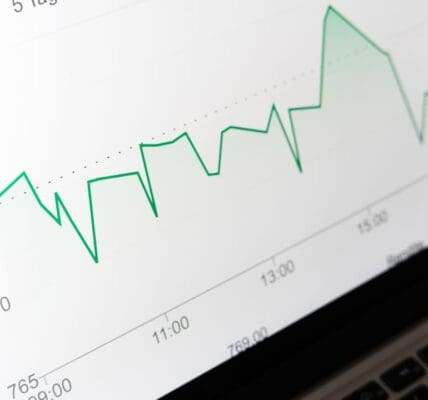A/B testing, also known as split testing, is a method of comparing two versions of a webpage or app to determine which one performs better. In Webflow, A/B testing allows users to create and test different variations of their website or landing page to identify which version resonates best with their audience. This process can involve testing various elements such as headlines, images, call-to-action buttons, layouts, and design components.
The primary objective of A/B testing is to make data-driven decisions about changes that will lead to the most effective conversion rates. When implementing A/B testing in Webflow, it is essential to have a clear understanding of the goals and desired outcomes. These goals may include increasing sign-ups, purchases, or engagement.
Having specific objectives helps in designing and executing tests more effectively. Furthermore, a thorough understanding of the target audience and their behavior is crucial. Knowledge of audience preferences and habits enables the creation of variations that are more likely to resonate with them and drive better results.
A/B testing in Webflow is a valuable tool for optimizing websites and improving user experience, ultimately leading to higher conversion rates and improved business outcomes.
Key Takeaways
- A/B testing in Webflow involves comparing two versions of a webpage to determine which one performs better in terms of user engagement and conversions.
- A/B testing can be leveraged for digital marketing in Webflow to optimize website elements such as headlines, call-to-action buttons, and images for improved user interaction and conversion rates.
- E-commerce businesses can use A/B testing in Webflow to test different product page layouts, pricing strategies, and checkout processes to increase conversions and sales.
- Implementing A/B testing for marketing campaigns in Webflow allows marketers to test different ad creatives, messaging, and targeting to identify the most effective strategies for driving conversions.
- Analyzing A/B testing results in Webflow is crucial for understanding user behavior and making data-driven decisions to optimize website elements and improve conversion rates.
Leveraging A/B Testing for Digital Marketing in Webflow
Informing Data-Driven Decisions
This data-driven approach enables marketers to make informed decisions about their marketing efforts, leading to more effective campaigns and better ROI. By leveraging A/B testing, marketers can identify areas of improvement and optimize their campaigns for maximum impact.
Refining Messaging, Design, and User Experience
In Webflow, digital marketers can leverage A/B testing to refine their messaging, design, and user experience to create more compelling and engaging content. By testing different elements such as headlines, images, copy, and calls-to-action, marketers can identify which variations drive the highest engagement and conversion rates.
Driving Better Results
Overall, A/B testing in Webflow is a powerful tool for digital marketers to improve their campaigns and drive better results. By continually testing and refining their approach, marketers can ensure that they are delivering the most relevant and compelling content to their audience, leading to increased conversions and a stronger ROI.
Increasing E-commerce Conversions with A/B Testing in Webflow

For e-commerce businesses using Webflow, A/B testing is a critical tool for increasing conversions and driving more sales. By testing different variations of product pages, checkout processes, and promotional offers, E-Commerce businesses can identify which elements are most effective at driving purchases and increasing revenue. This data-driven approach allows businesses to make informed decisions about their website and marketing strategies, leading to higher conversion rates and improved customer satisfaction.
In Webflow, e-commerce businesses can use A/B testing to optimize their product pages by testing different product images, descriptions, pricing, and calls-to-action. Additionally, they can test different variations of the checkout process to identify any friction points that may be hindering conversions. By continuously testing and refining these elements, e-commerce businesses can create a more seamless and compelling shopping experience for their customers, ultimately leading to higher conversion rates and increased sales.
Overall, A/B testing in Webflow is a powerful tool for e-commerce businesses to optimize their websites and drive more revenue.
Implementing A/B Testing for Marketing Campaigns in Webflow
| Metrics | Before A/B Testing | After A/B Testing |
|---|---|---|
| Click-through Rate (CTR) | 2.5% | 3.2% |
| Conversion Rate | 15% | 18% |
| Bounce Rate | 40% | 35% |
| Revenue | 10,000 | 12,500 |
When it comes to marketing campaigns in Webflow, implementing A/B testing is crucial for optimizing performance and driving better results. Whether it’s email campaigns, social media ads, or landing pages, A/B testing allows marketers to test different variations of their content to identify what resonates best with their audience. This data-driven approach enables marketers to make informed decisions about their campaigns and ensure that they are delivering the most compelling and effective content to their audience.
In Webflow, marketers can implement A/B testing for their marketing campaigns by testing different elements such as headlines, images, copy, and calls-to-action. By doing so, they can identify which variations drive the highest engagement and conversion rates, allowing them to optimize their campaigns for maximum impact. Additionally, A/B testing can help marketers understand their audience better and tailor their messaging to better resonate with them.
Overall, implementing A/B testing for marketing campaigns in Webflow is essential for driving better results and improving overall campaign performance.
Analyzing A/B Testing Results for Effective Conversion Optimization in Webflow
After conducting A/B tests in Webflow, it’s crucial to analyze the results to gain insights into what elements are driving the most conversions and engagement. By analyzing the data from A/B tests, businesses can identify patterns and trends that can inform future optimization efforts and improve overall conversion rates. This data-driven approach allows businesses to make informed decisions about their website and marketing strategies, leading to higher conversion rates and improved business outcomes.
In Webflow, analyzing A/B testing results involves looking at key metrics such as click-through rates, conversion rates, bounce rates, and engagement metrics. By comparing the performance of different variations, businesses can identify which elements are most effective at driving conversions and engagement. Additionally, businesses can use tools such as heatmaps and session recordings to gain deeper insights into user behavior and preferences.
By understanding how users interact with different variations, businesses can make informed decisions about how to optimize their website for better performance. Overall, analyzing A/B testing results in Webflow is essential for effective conversion optimization and improving overall business outcomes.
Best Practices for A/B Testing in Webflow for Maximum Conversions

Define Your Hypothesis and Goal
To get the most out of A/B testing, it’s crucial to have a clear hypothesis for each test and a specific goal in mind. By defining what you want to achieve with each test, you can design more focused variations and measure the impact more effectively.
Test One Element at a Time
It’s vital to test one element at a time to isolate the impact of each change and gain clearer insights into what drives better performance. This approach helps you understand which elements are most effective at driving conversions.
Ensure Statistical Significance
Businesses should ensure that they have a large enough sample size for each test to ensure statistical significance. By collecting enough data from each variation, businesses can make more confident decisions about which elements are most effective at driving conversions.
Continuous Testing and Iteration
To achieve ongoing optimization, it’s essential to continuously test and iterate on your website and marketing strategies. By regularly conducting A/B tests, businesses can identify new opportunities for improvement and ensure that they are delivering the most compelling content to their audience.
Integrating A/B Testing into Your Webflow Workflow for Enhanced Marketing Strategies
Integrating A/B testing into your Webflow workflow is essential for enhancing your marketing strategies and ensuring that you are delivering the most compelling content to your audience. By making A/B testing a regular part of your workflow, you can continuously optimize your website and marketing campaigns for better performance. This data-driven approach allows you to make informed decisions about your content and ensure that you are delivering the most relevant and engaging experiences to your audience.
In Webflow, businesses can integrate A/B testing into their workflow by using built-in tools or third-party integrations to create and execute tests seamlessly. Additionally, businesses should establish a process for analyzing test results and implementing changes based on the insights gained. By making A/B testing a regular part of your workflow, you can ensure that you are continuously improving your website and marketing strategies for maximum impact.
Overall, integrating A/B testing into your Webflow workflow is essential for enhancing your marketing strategies and driving better results. In conclusion, A/B testing is a powerful tool for optimizing websites and marketing strategies in Webflow. By understanding the basics of A/B testing, leveraging it for digital marketing, increasing e-commerce conversions, implementing it for marketing campaigns, analyzing results for effective conversion optimization, following best practices, and integrating it into your workflow, businesses can drive better results and improve overall performance.
With a data-driven approach to optimization, businesses can ensure that they are delivering the most compelling content to their audience and driving maximum conversions.
FAQs
What is A/B testing in webflow?
A/B testing in webflow is a method of comparing two versions of a webpage or app to determine which one performs better. It involves testing variations of elements such as headlines, images, or call-to-action buttons to see which version leads to higher conversion rates or user engagement.
How does A/B testing work in webflow?
In webflow, A/B testing typically involves creating multiple variations of a webpage using the built-in tools or third-party integrations. Users can then set up the test to randomly show different versions to visitors and track the performance of each variation using metrics such as click-through rates, bounce rates, or conversion rates.
What are the benefits of A/B testing in webflow?
A/B testing in webflow allows users to make data-driven decisions to optimize their websites or apps for better user experience and higher conversion rates. It helps identify which design or content elements resonate with the audience and can lead to improved overall performance.
What are some best practices for A/B testing in webflow?
Some best practices for A/B testing in webflow include clearly defining the goals of the test, testing one element at a time, ensuring a large enough sample size for statistical significance, and using reliable analytics tools to track and analyze the results.
Are there any limitations to A/B testing in webflow?
Some limitations of A/B testing in webflow include the need for sufficient traffic to generate meaningful results, the potential for false positives if not properly controlled, and the time and resources required to set up and analyze tests. Additionally, A/B testing may not always account for user behavior or preferences that are not easily quantifiable.












